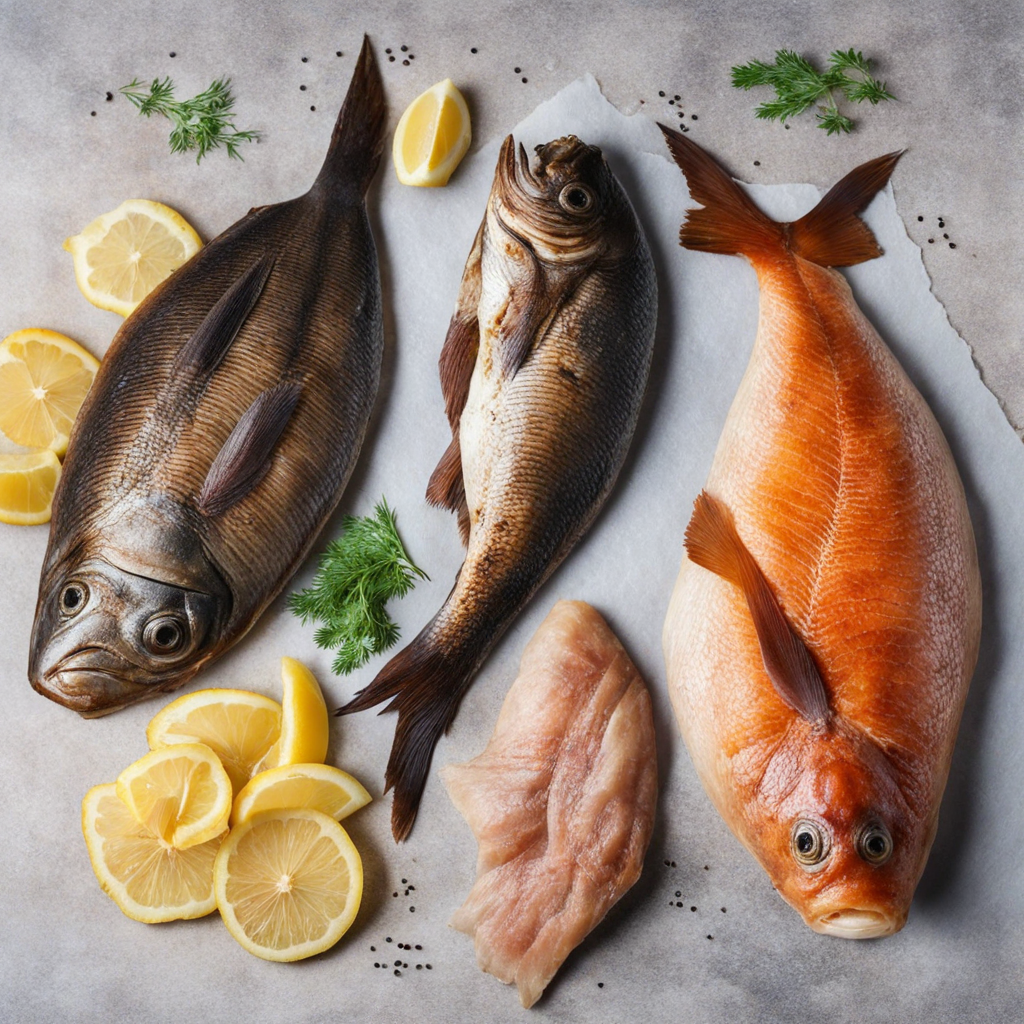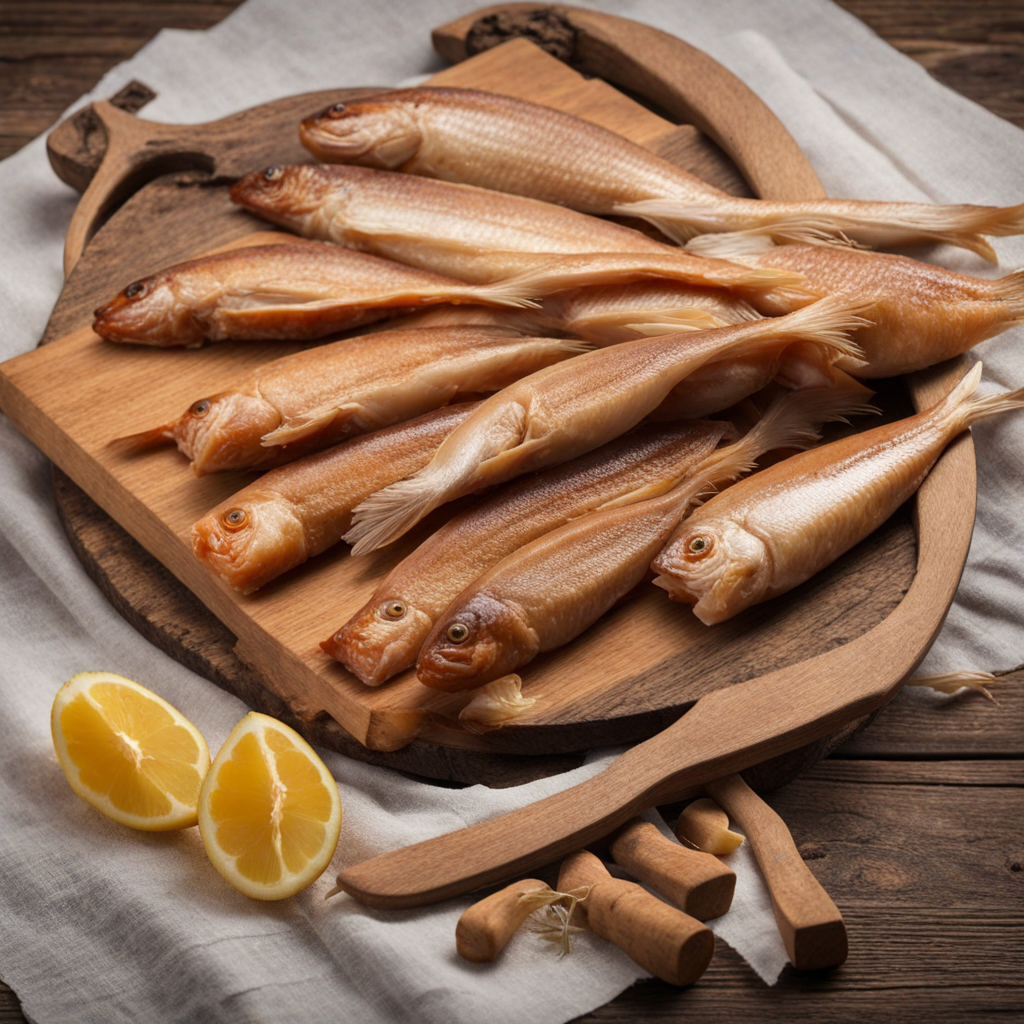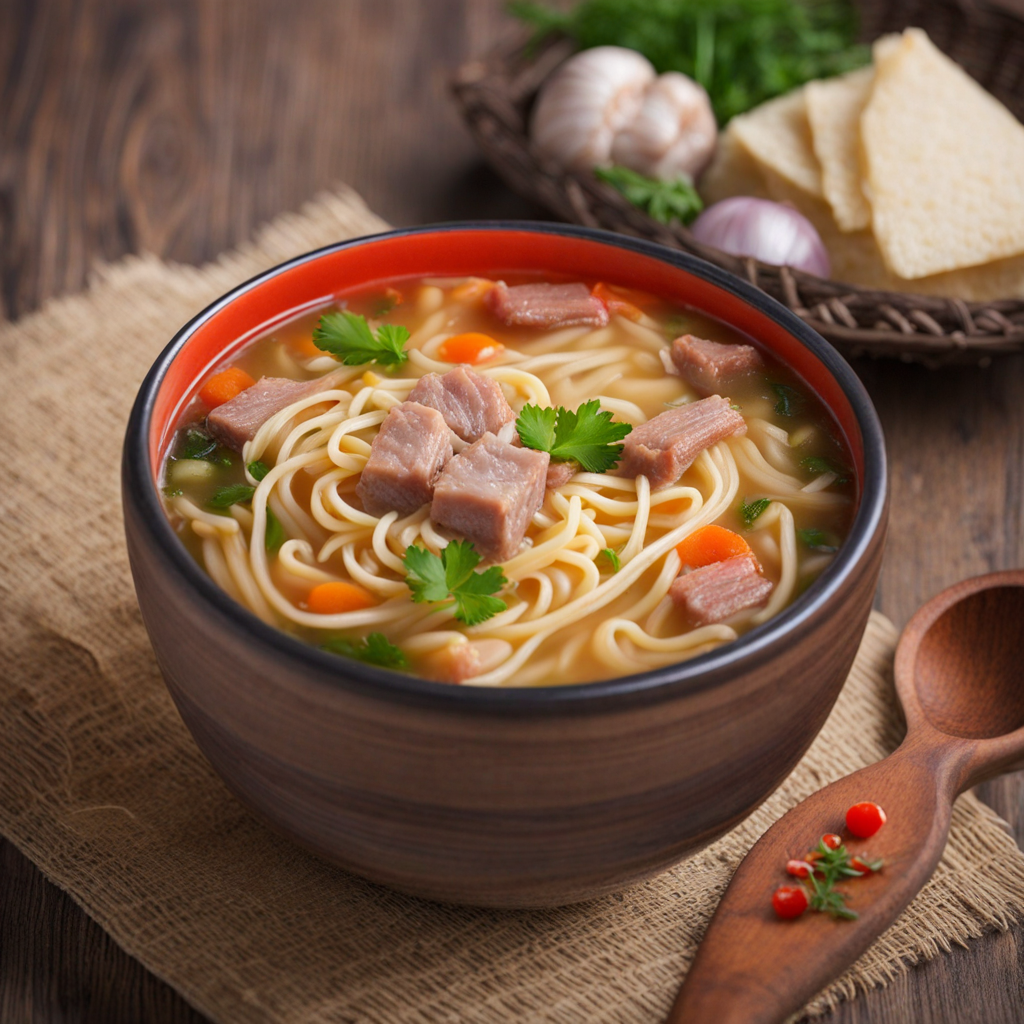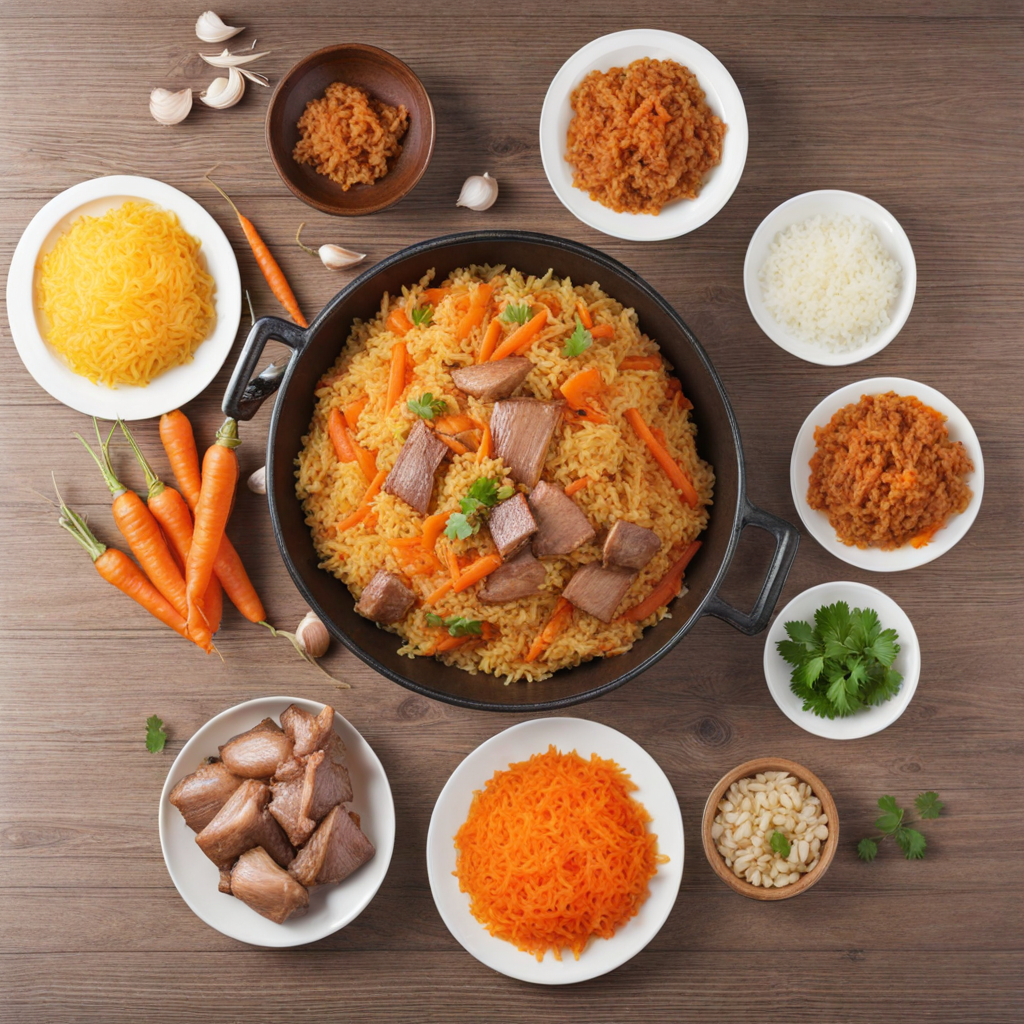Balik
Balik is a traditional Kazakh dish that showcases the rich culinary heritage of Kazakhstan, particularly through its emphasis on fish. This dish typically features freshwater fish, most commonly sturgeon or salmon, which are meticulously prepared and cured using a blend of salt and spices. The curing process not only enhances the flavor but also preserves the fish, allowing it to be enjoyed year-round. The result is a delicately flavored protein that embodies the essence of the vast rivers and lakes found throughout the region. The preparation of Balik often involves a unique smoking or drying technique, which imparts a subtle smokiness that complements the natural taste of the fish. The texture is firm yet tender, making it a delight to bite into. It is commonly served as an appetizer or as part of a larger meal, often accompanied by traditional Kazakh bread or fresh vegetables. The presentation of Balik is usually simple, allowing the quality and flavors of the fish to take center stage, often garnished with herbs such as dill or parsley for an added layer of freshness. Balik is more than just a dish; it is a cultural experience that reflects the traditions and communal spirit of the Kazakh people. Whether enjoyed during family gatherings, celebrations, or as part of everyday meals, Balik brings people together around the table. Its unique flavor profile invites food enthusiasts to explore the diverse culinary landscape of Kazakhstan, offering a taste that is both traditional and deeply rooted in the country's history.
How It Became This Dish
Origin of Балық The term "балық" translates to "fish" in Kazakh, and it plays a pivotal role in the culinary traditions of Kazakhstan. The vast steppes and numerous rivers of Kazakhstan have historically provided a rich source of fish, making it an integral part of the local diet. The Caspian Sea, the largest enclosed inland body of water in the world, lies to the west of Kazakhstan and serves as a vital resource for various fish, including sturgeon and carp. The ancient nomadic tribes that roamed these lands recognized the nutritional value of fish, incorporating it into their diets alongside meat and dairy products. Kazakhstan's fishing traditions date back thousands of years. Archaeological evidence suggests that fish was a staple food for early settlers along the banks of the Irtysh and Ural rivers. The indigenous people developed various methods for catching fish, including nets and traps. The evolution of fishing techniques mirrored the changes in lifestyle, from nomadic to more sedentary practices, as communities established permanent settlements along water bodies. This transition allowed for a more consistent supply of fish, which became a staple in the local cuisine. \n\n Cultural Significance of Балық Beyond its nutritional value, балық holds significant cultural importance in Kazakhstan. The Kazakh people have a deep-rooted respect for nature and the resources it provides, and fish is often seen as a symbol of abundance and prosperity. Traditional Kazakh folklore includes numerous tales that celebrate the mystical qualities of fish, with many stories highlighting the generosity of water bodies in sustaining life. In the context of celebrations and communal gatherings, fish dishes are often served as a sign of hospitality. Kazakh weddings and festivals frequently feature elaborate meals that include fish, symbolizing unity and the sharing of resources among families and communities. The preparation and sharing of fish dishes also reinforce social bonds, as cooking together and sharing meals are essential elements of Kazakh culture. Moreover, the preparation of балық reflects traditional Kazakh culinary methods, which emphasize simplicity and the use of natural ingredients. Common methods of cooking fish include smoking, drying, and grilling, which have been passed down through generations. These techniques not only enhance the flavor of the fish but also serve as a means of preservation, a crucial factor in a region where refrigeration was not historically available. \n\n Types and Preparation of Балық Kazakhstan boasts a rich variety of fish species, and different regions have developed their unique preferences and preparation methods. In the northern regions, freshwater fish such as pike, perch, and carp are commonly caught and consumed. Meanwhile, the southern regions, closer to the Caspian Sea, favor sturgeon and other saltwater fish. One popular traditional dish is "балық, пісірілген" (boiled fish), where the fish is simply boiled with herbs and spices, allowing the natural flavors to shine. Another favored dish is "балық, қуырылған" (fried fish), typically prepared with a light batter and served with a side of vegetables or potatoes. The dried fish, known as "кептірілген балық," is also a cherished delicacy, often enjoyed during winter months as a source of sustenance. In addition to these dishes, the Kazakhs have developed a unique method of preparing fish known as "балық, шала пісірілген," or lightly cooked fish. This technique involves marinating the fish in a mixture of salt and spices, followed by quick grilling or smoking. The result is a flavorful dish that retains the delicate texture of the fish, making it a favorite at festive gatherings. \n\n Modern Developments In recent years, the popularity of балық has only increased, driven by globalization and the rise of culinary tourism in Kazakhstan. As the country opens up to the world, chefs are experimenting with traditional recipes, incorporating modern twists while still honoring the original flavors and techniques. This fusion of old and new has led to a renaissance in Kazakh cuisine, with fish dishes taking center stage in many upscale restaurants. Moreover, the awareness of sustainable fishing practices has begun to influence how fish is sourced and prepared. With the decline of certain fish populations due to overfishing and environmental changes, there is a growing emphasis on responsible fishing practices. This shift not only aims to preserve the ecological balance of Kazakhstan's water bodies but also ensures that future generations can enjoy the rich flavors of балық. The rise of social media and food blogs has also played a significant role in promoting Kazakh fish dishes, bringing them to the attention of a global audience. Influencers and food enthusiasts share recipes and stories about traditional fishing practices, highlighting the importance of fish in Kazakh culture. This newfound interest has sparked a revival of traditional cooking methods, with younger generations seeking to reconnect with their culinary heritage. \n\n Bалық in Contemporary Cuisine Today, балық is not just confined to traditional dishes but has found its way into contemporary Kazakh cuisine. Innovative chefs are reinterpreting classic fish dishes with creative presentations and unique flavor combinations. For instance, fish tartare garnished with local herbs and served alongside traditional bread has become a popular appetizer in modern Kazakh eateries. Additionally, fusion cuisines have emerged, where traditional Kazakh fish dishes are combined with flavors from neighboring countries, such as Russia and China. This exchange of culinary ideas reflects the diverse influences on Kazakh cuisine and showcases the adaptability of балық as an ingredient. As the appreciation for Kazakh cuisine grows, the significance of балық continues to be celebrated, reinforcing its status as a vital component of the Kazakh identity. Through its rich history, cultural relevance, and ongoing evolution, балық remains a cherished part of Kazakhstan's culinary landscape, embodying the spirit of the land and its people. \n\n In conclusion, the history of балық in Kazakhstan is a testament to the resilience and adaptability of Kazakh culinary traditions. From ancient fishing practices to modern interpretations, fish has played a crucial role in shaping the country's food culture. As Kazakhstan continues to embrace its rich heritage while looking toward the future, балық will undoubtedly remain a key player in the evolving narrative of Kazakh cuisine.
You may like
Discover local flavors from Kazakhstan







